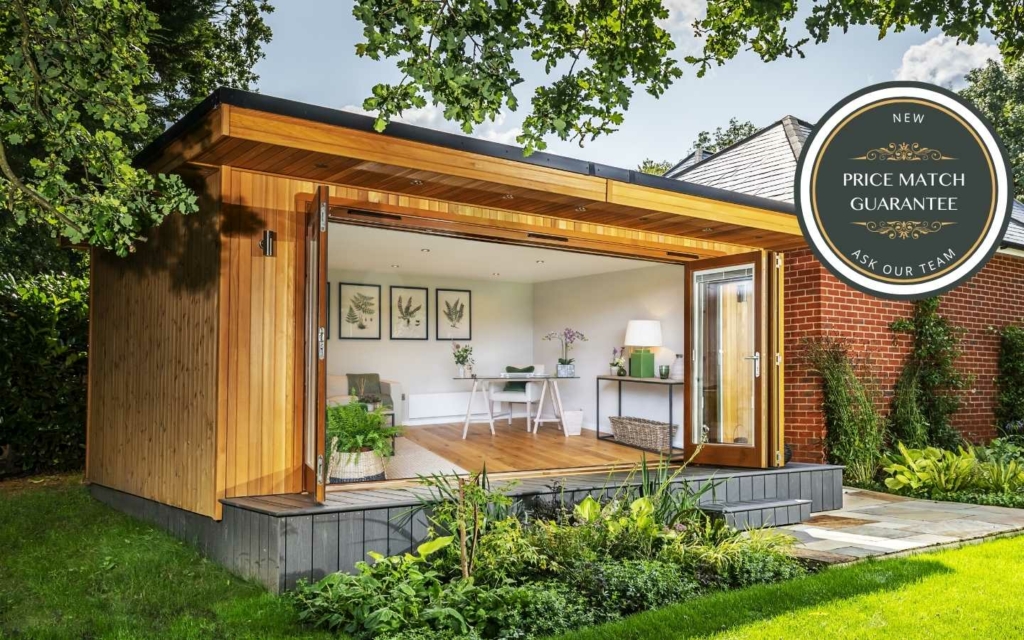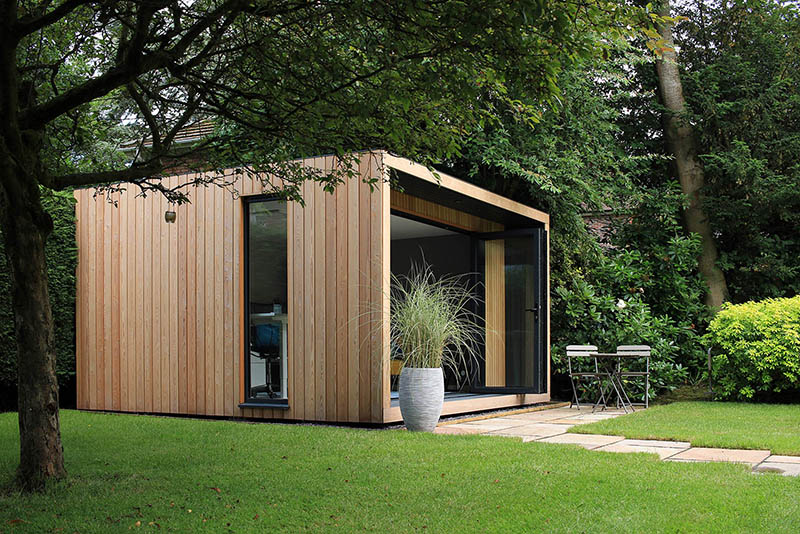Good Reasons On Planning Permission For Garden Summer Houses
Good Reasons On Planning Permission For Garden Summer Houses
Blog Article
In Conservation Areas, What Permissions Do You Require For Garden Rooms And Other Structures?
To protect the character and aesthetics of conservation areas when creating extensions, gardens, or conservatories in these designated zones, certain restrictions are in place. Here are the main considerations when planning permission is required within conservation areas:
A conservation area could require approval for planning for any structure extension, addition or any other construction that would normally be covered by permitted development rights. Sheds, garden rooms or other outbuildings are included.
Size and Scale
The authority for planning may need approval for any structure in any size if the dimensions are deemed as detrimental to the conservation zone. The size and scale of new constructions or extensions are regulated more tightly than those that are in zones with no designation.
Location of the property:
It is more typical to need planning permission for extensions and buildings that are located at the front or the sides of the house. It could also be necessary to obtain permission to build structures at the back of the property, particularly if they are visible from the public space or have an impact on the general nature of the neighborhood.
Materials and design:
Design and materials are essential in conservation zones. The choice of materials for a new building or extension needs to be compatible with the historical or architectural significance of the site. To meet these requirements, you'll require planning permission.
Demolition:
In conservation zones, the demolishment of existing buildings and parts of structures (including outbuildings wall boundaries, outbuildings, etc.) usually requires planning approval to ensure the proposed changes are in line with the character of the land.
Height Restrictions
In conservation zones, there are more stringent height restrictions. Planning approval is required for any structure that is greater than 2.5 meters (especially when it's less than 2 meters from a border).
Effect on the Surroundings
Planning permission might be required if a proposed building extension, addition or change to the appearance or setting of the conservation zone will likely to have a negative impact on its appearance and the surrounding environment.
The building is used to:
There is a chance that a backyard building or room might fall within the allowed space limit, but the intended purpose, such as being an office, home studio or other habitable space, might require approval from the planning department.
Extensions and Alterations:
In general, extensions that change the appearance of the structure or exceed certain volume or size limits need planning approval. This includes conservatories and other major changes.
Curtilage Structures:
The structures within the curtilage of an listed building within an area of conservation always require planning permission. This applies to any additions or modifications or additions to outbuildings.
Protection of trees
The trees are protected in conservation areas. If you intend to build on trees, additional permits, such as the tree works consent or planning permission, may be required.
Local Authority Guidelines:
Each conservation area may have specific guidelines and limitations established by the local planning authority. They could include precise guidelines regarding what is permissible and what isn't specific to the particular nature of the region.
Planning permission in Conservation Areas is based on a thorough assessment of how the proposed gardenroom outhouse, conservatory, outhouse, or garden office could have an have an impact on the architectural or historic characteristics of the conservation area. To ensure that your plan is compliant with the relevant laws, it is essential to talk with your local authorities before beginning the process of designing. View the top conservatory what is for site recommendations including how to lay decking on soil, best electric heater for cabin, outhouse buildings, ground screws vs concrete base, luxury outhouse, out house, herts garden rooms, outhouse garden rooms, insulated garden rooms, garden rooms in St Albans and more.
What Is The Neighbourhood Planning Permission For Garden Rooms Etc.?
When deciding if planning permission is necessary for the construction of a garden office, conservatories or garden rooms as well as outhouses and outhouses in the neighborhood, it's important to think about whether neighbors are worried. These are the most important elements to be considered including privacy, overlooking and Extensions.
Planning permission may be needed if the new construction could result in the loss of private space. It is essential to make sure that the proposed structure will not negatively impact nearby residents.
Overshadowing and loss of light:
Planning permission is required when the proposed structure could create an overshadowing effect or loss of light in adjacent properties. Local planning authorities are able to assess the effects of sunlight and daylight on adjacent homes.
Noise and Disturbance
Planning permits are required if the extension or room is used for any activity that causes the sound (such an office at home with guests, a workshop, music room, etc.). It will ensure that the noise level aren't going to interfere with the surrounding area.
Visual Impact:
The dimensions, shape and overall design must reflect the style of the neighborhood. Planning permission ensures that the development is aesthetic and does not detract from the area's aesthetic.
Boundary Proximity
The construction of structures within two meters of a boundary or structures that are higher than 2.5 meters may require permission to plan. This is to avoid any conflicts or impacts to the property adjacent to it.
Shared Access Rights of Way and Rights of Way
To ensure that the rights of access shared by all of way are not obstructed or negatively impacted by the construction, planning permission will be required.
Opposition from neighbors:
People living in the immediate area have the right to speak with neighbors on applications for planning. Planning authorities take into consideration objections from neighbors when deciding whether permission should be granted.
The impact of this on property values:
Although it's not always an issue of primary importance, modifications that may affect the property value of adjacent properties could have an impact on the need to obtain permission to plan. These impacts will be considered by the local authorities when making their decision.
Covenants and Deed Restrictions:
There may be restrictions or covenants on the property which require compliance regardless of approval for planning. These legal agreements may dictate what is and is not allowed to be built. This can affect peace and harmony in the neighborhood.
Construction Disturbance:
Planning permission may be granted in order to resolve concerns about disruptions that may occur during construction, such as traffic, dust and noise. The construction may have conditions on the construction project to reduce the impact it has on neighbors.
Impact on Infrastructure
The planning approval assures that any additional impact on the local infrastructure is assessed and managed.
Consultation with the Community:
In some instances the need for a more extensive community consultation may be required, especially for larger or more controversial projects. This enables a more democratic decision-making process, taking into account the opinions of the community.
In conclusion, the neighborhood's concerns play an important role in receiving planning permissions for garden rooms or conservatories. It is important to ensure that the development is not a negative impact on the neighborhood's living conditions as well as privacy levels as well as sound, light or overall character. In consultation with the local authorities for planning and involvement with neighbors can aid in addressing these issues. See the top rated 3 x 3 garden room for site advice including outhouse buildings, garden rooms, garden rooms hertfordshire, outhouse builders, what size garden room without planning permission, composite garden rooms, garden office electrics, garden rooms brookmans park, how to lay decking on soil, garden rooms and more.
What Planning Permission Is Required For Gardens, Rooms, Etc. With Regard To Appearance And Design?
In deciding whether or not to get permission to designate garden rooms or outhouses, conservatories, and other structures as well as garden offices or extensions It is crucial to take into consideration the design of the building. Here are some key points to consider:
Planning permission is not required if your proposed structure is within the development rights that are permitted to your property. There are specific specifications regarding design and appearance which must be met.
Size and Scale:
The dimensions and size of the structure to be constructed must be proportional to the existing property and buildings around it. Planning approval is required for structures which exceed the dimensions set out in the allowed development rights.
Height and Mass:
The massing, height and dimensions of a new structure must be in line with the surrounding property and existing buildings. Planning permission is usually required for buildings that are over the height limit or not in proportion to the surrounding buildings.
Materials and Finish:
The materials and finishes chosen should be in harmony with the structure's existing appearance and the surroundings. The material chosen might need to be approved by the authority responsible for planning when they do not fit in with the style with the buildings around them.
Design Harmony
The design and style of the building must be in harmony with the architectural style of the structure already in place. If the design that is proposed does not match the local appearance and character Planning permission is needed.
Roof Design
The design of the roof should be in line with the style of the surrounding property and the surrounding buildings. It is possible to obtain permission for planning if the proposed roofing design does not match with the local culture or design.
Fenestration Windows and Doors:
The design and placement of the door and windows must complement the property and its surroundings. The proposed fenestration might require a planning permit in the event that it is not compatible with the local style.
Facade Treatment
The facade's treatment should be consistent with the property's existing appearance and buildings around it. It may be necessary to seek planning permission for any proposed facade treatment which is not in harmony with the character and appearance of the surrounding area.
Landscape and its surroundings
The landscaping around the new structure should complement the existing landscaping and buildings. If the landscaping doesn't fit with the local appearance and style the planning permission might be required.
Visual Impact
The new structure should be able to have a minimal impact on its surroundings. A planning permit might be required for any structure that is a negative impact on the surrounding area.
Heritage and Conservation Areas
If the building is in a heritage or conservation zone, more stringent design and appearance criteria may be in place. Planning permission may be required for any building that is not in compliance with these criteria.
Planning and architectural guidelines:
Local planning authorities typically have design and look guidelines which must be adhered to. Planning permission may be required when a building proposal isn't in accordance with these guidelines.
Summary The planning permission needed for conservatories and garden rooms and outhouses, office buildings, or extensions, are usually dependent on the design of the structure, its appearance, and the dimensions of the structure being proposed. It is essential to talk with the local planning authority early in the process of planning to ensure that the structure is in accordance with local characteristics and guidelines for appearance and to determine whether planning permission is required. Take a look at the best red cedar garden rooms for more advice including composite garden rooms, what size garden room without planning permission uk, garden rooms in St Albans, costco garden buildings, outhouses, garden rooms brookmans park, small garden office, garden office hertfordshire, garden rooms hertfordshire, outhouses and more.